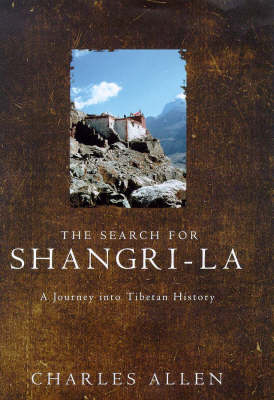
The Search For Shangri-La
A Journey into Tibetan History
Seiten
1999
Little, Brown & Company (Verlag)
978-0-316-64810-3 (ISBN)
Little, Brown & Company (Verlag)
978-0-316-64810-3 (ISBN)
- Titel ist leider vergriffen;
keine Neuauflage - Artikel merken
In 1932 the writer James Hilton coined the word "Shangri-La" in his popular romance, "Lost Horizon". Exploring the myth behind the story, this book tracks down the sources that Hilton drew upon in writing his novel, and then sets out to discover what lies behind the legend that inspired him.
The idea of a hidden refuge, a paradise far from the stresses of modern life, has universal appeal. In 1932 the writer James Hilton coined the word "Shangri-La" to describe such a place, when he gave that name to a hidden valley in the Himalayas in his popular romance, "Lost Horizon". Exploring the myth behind the story, this book tracks down the sources that Hilton drew upon in writing his novel, and then sets out to discover what lies behind the legend that inspired him. In the course of an account of his four journeys into Tibet, Charles Allen also provides a reading of that country's early history, dismissing notions of Tibet as a Buddhist paradise and seeking to restore the mysterious pre-Buddhist religion of Bon to its rightful place in Tibetan culture. He also locates the "lost" kingdom of Shang-shung and, in doing so, the original Shangri-La itself: in a remarkable gorge beyond the Himalayas, full of extraordinary ruins.
The idea of a hidden refuge, a paradise far from the stresses of modern life, has universal appeal. In 1932 the writer James Hilton coined the word "Shangri-La" to describe such a place, when he gave that name to a hidden valley in the Himalayas in his popular romance, "Lost Horizon". Exploring the myth behind the story, this book tracks down the sources that Hilton drew upon in writing his novel, and then sets out to discover what lies behind the legend that inspired him. In the course of an account of his four journeys into Tibet, Charles Allen also provides a reading of that country's early history, dismissing notions of Tibet as a Buddhist paradise and seeking to restore the mysterious pre-Buddhist religion of Bon to its rightful place in Tibetan culture. He also locates the "lost" kingdom of Shang-shung and, in doing so, the original Shangri-La itself: in a remarkable gorge beyond the Himalayas, full of extraordinary ruins.
| Erscheint lt. Verlag | 4.3.1999 |
|---|---|
| Verlagsort | New York |
| Sprache | englisch |
| Maße | 156 x 240 mm |
| Themenwelt | Reisen ► Reiseberichte ► Asien |
| Reisen ► Reiseberichte ► Nord- / Mittelamerika | |
| Geisteswissenschaften ► Sprach- / Literaturwissenschaft ► Anglistik / Amerikanistik | |
| Geisteswissenschaften ► Sprach- / Literaturwissenschaft ► Literaturwissenschaft | |
| Sozialwissenschaften ► Soziologie | |
| ISBN-10 | 0-316-64810-8 / 0316648108 |
| ISBN-13 | 978-0-316-64810-3 / 9780316648103 |
| Zustand | Neuware |
| Haben Sie eine Frage zum Produkt? |
Mehr entdecken
aus dem Bereich
aus dem Bereich
Buch | Softcover (2024)
Conbook Medien (Verlag)
9,95 €


